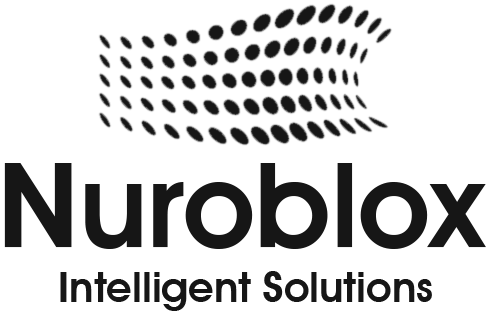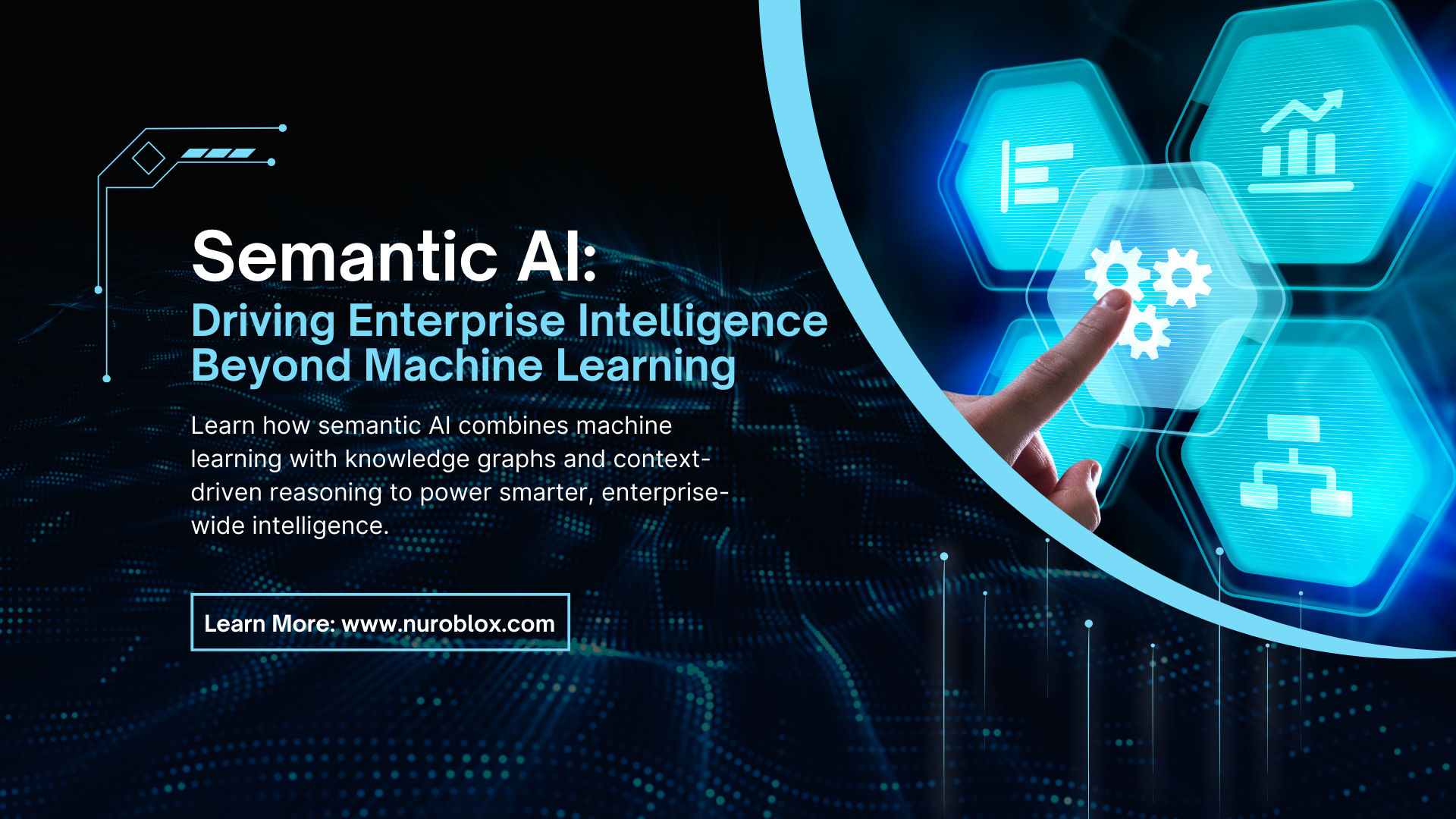Semantic AI: Driving Enterprise Intelligence Beyond Machine Learning
Artificial intelligence has reached a critical juncture. While machine learning (ML) and neural networks have dominated the first wave of enterprise AI adoption, businesses are increasingly realizing that raw statistical models and narrow pattern recognition are not enough to handle complex, context-rich problems.
Enter Semantic AI, an approach that integrates machine learning with semantic technologies, such as
ontologies, taxonomies, and knowledge graphs, to enable machines to reason, interpret meaning, and work with contextual understanding. Unlike traditional AI that focuses on correlating data points, semantic AI emphasizes relationships and meaning, providing enterprises with a deeper, more actionable understanding of their information ecosystems.
This blog explores what semantic AI is, why it matters for enterprises, real-world applications, adoption
challenges, and how organizations can build a roadmap to leverage context-driven intelligence.
What is Semantic AI?
Semantic AI is the convergence of artificial intelligence and semantic technologies. It uses structures like ontologies, taxonomies, and knowledge graphs to encode meaning into data, enabling AI systems to-
- Understand context instead of simply identifying patterns
- Reason over knowledge by connecting data entities through relationships
- Enable interoperability across diverse systems and silos
- Provide explainability by grounding AI outputs in transparent knowledge structures
Comparison: Traditional AI vs. Semantic AI
| Dimension | Traditional AI (ML Focus) | Semantic AI (Context + ML) |
| Data Dependency | Requires massive labeled datasets | Works with smaller, structured knowledge bases |
| Interpretability | Black-box predictions | Transparent, explainable reasoning |
| Contextual Ability | Limited | Strong – understands meaning via ontologies |
| Scalability | Requires retraining for new tasks | Extensible through knowledge graph updates |
| Trustworthiness | Often opaque | High – grounded in knowledge structures |
In essence, semantic AI moves enterprises closer to human-like intelligence, where machines understand what data means rather than just processing it.
Why Semantic AI Matters for Enterprises
Enterprises today face exponential data growth, fragmentation, and compliance pressures. Traditional AI has brought advanced analytics, but semantic AI offers additional advantages.
Key Enterprise Benefits
- Enhanced Decision-Making- AI powered by meaning and relationships offers richer insights.
- Cross-Enterprise Data Interoperability- Enables data unification across silos.
- Explainable AI (XAI)- Provides transparent reasoning critical for regulated industries like healthcare
and finance. - Faster Innovation- Flexible ontologies allow enterprises to extend models without retraining.
- Regulatory Compliance- Semantic traceability ensures compliance with GDPR, HIPAA, and AI Act
requirements. - Improved Automation- Smarter process automation capable of understanding context, not just
patterns.
Enterprise Applications of Semantic AI
Semantic AI can impact nearly every industry. Below are practical enterprise use cases.
Healthcare and Life Sciences
- Clinical Research- Semantic AI links diverse medical data sets, accelerating drug discovery.
- Patient Care- Knowledge graphs integrate patient histories, lab results, and guidelines for context-aware clinical decisions.
- Regulatory Compliance- Improves traceability of healthcare AI recommendations.
Financial Services
- Fraud Detection- Combining semantic relationships with anomaly detection improves fraud detection accuracy.
- Regulatory Audits- Semantic models provide explainable outputs required by regulators.
- Intelligent Advisors- Context-enriched robo-advisors deliver personalized investment strategies.
Manufacturing & Supply Chain
- Predictive Maintenance- Contextual understanding of machine hierarchies enhances predictive models.
- Digital Twins- Semantic AI creates interoperable digital twin models for factories.
- Sustainability Tracking- Semantic layers trace carbon emissions across supply chains.
Enterprise Knowledge Management
- Semantic AI powers enterprise knowledge graphs that unify documentation, contracts, personnel information, and customer interactions, turning knowledge into a strategic asset.
Key Technologies Powering Semantic AI
Semantic AI is not a single product but a stack of interoperable technologies.
Core Components
- Ontologies & Taxonomies- Structures that codify domain knowledge.
- Knowledge Graphs- Networks of entities and relationships forming the backbone of semantic
reasoning. - Natural Language Processing (NLP)- Enhanced with semantic layers, NLP understands meaning
and disambiguation. - Machine Learning Models- Used with semantic anchors for predictive accuracy and adaptability.
- Reasoning Engines- Logic-based engines for deriving explainable conclusions.
Semantic AI vs. Generative AI in Enterprises
Generative AI has received most of the hype, but enterprises increasingly need semantic structures for grounding large language models (LLMs).
Complementary Relationship
- LLMs provide fluency, generating content and summarizations.
- Semantic AI ensures accuracy and grounding, reducing hallucinations.
- Together, they create hybrid models where LLMs generate but semantic AI validates against knowledge graphs.
Challenges in Semantic AI Adoption
Despite its potential, enterprise adoption faces hurdles-
- Complex Implementation- Developing ontologies requires domain expertise.
- Cultural Barriers- Business units struggle to adopt semantic approaches without strong governance.
- Integration Complexity- Legacy systems often lack interoperability for semantic layers.
- Skill Shortage- Semantic engineering talent is still scarce compared to ML engineers.

Step 1: Define Business Drivers
Prioritize pain points where semantic AI offers real advantage, e.g., compliance, knowledge management, or risk.
Step 2: Build Enterprise Knowledge Graphs
Start with a core domain ontology and expand iteratively.
Step 3: Integrate AI with Semantic Layers
Embed semantic reasoning into ML workflows for hybrid intelligence.
Step 4: Establish Governance
Institute data stewardship roles, bias-monitoring, and explainability frameworks.
Step 5: Scale Across Business Units
After successful pilots, scale semantic AI enterprise-wide with MLOps and semantic operations (SemOps).
The Future of Semantic AI in Enterprise Life
The next decade will see semantic AI evolve from niche use cases to mainstream enterprise fabric.
Trends Ahead
- Convergence with Generative AI- Seamless fusion of semantic grounding with content generation.
- Standardization- Industry-wide ontologies will accelerate adoption.
- Autonomous Decision-Making- Semantic AI will serve as the explainable backbone for AI-driven autonomous enterprises.
- Industry Ecosystem Collaboration- Multiple companies in sectors like telecom or pharma will share knowledge graphs for shared insights.
Statista estimates the semantic AI market will grow at 18% CAGR 2024–2030, reflecting enterprise urgency to embed contextual intelligence in operations.
Conclusion: Thriving in the Era of Semantic AI
Semantic AI represents the next step in AI’s evolution moving from correlation-driven algorithms to context-aware enterprise intelligence. It bridges trust, interoperability, explainability, and scalability, helping enterprises move beyond simple predictions into deep reasoning and actionable insight.
The companies that embrace semantic AI will lead in compliance, decision-making, and innovation velocity. More importantly, they will create resilient, intelligent, and human-centric enterprises.


